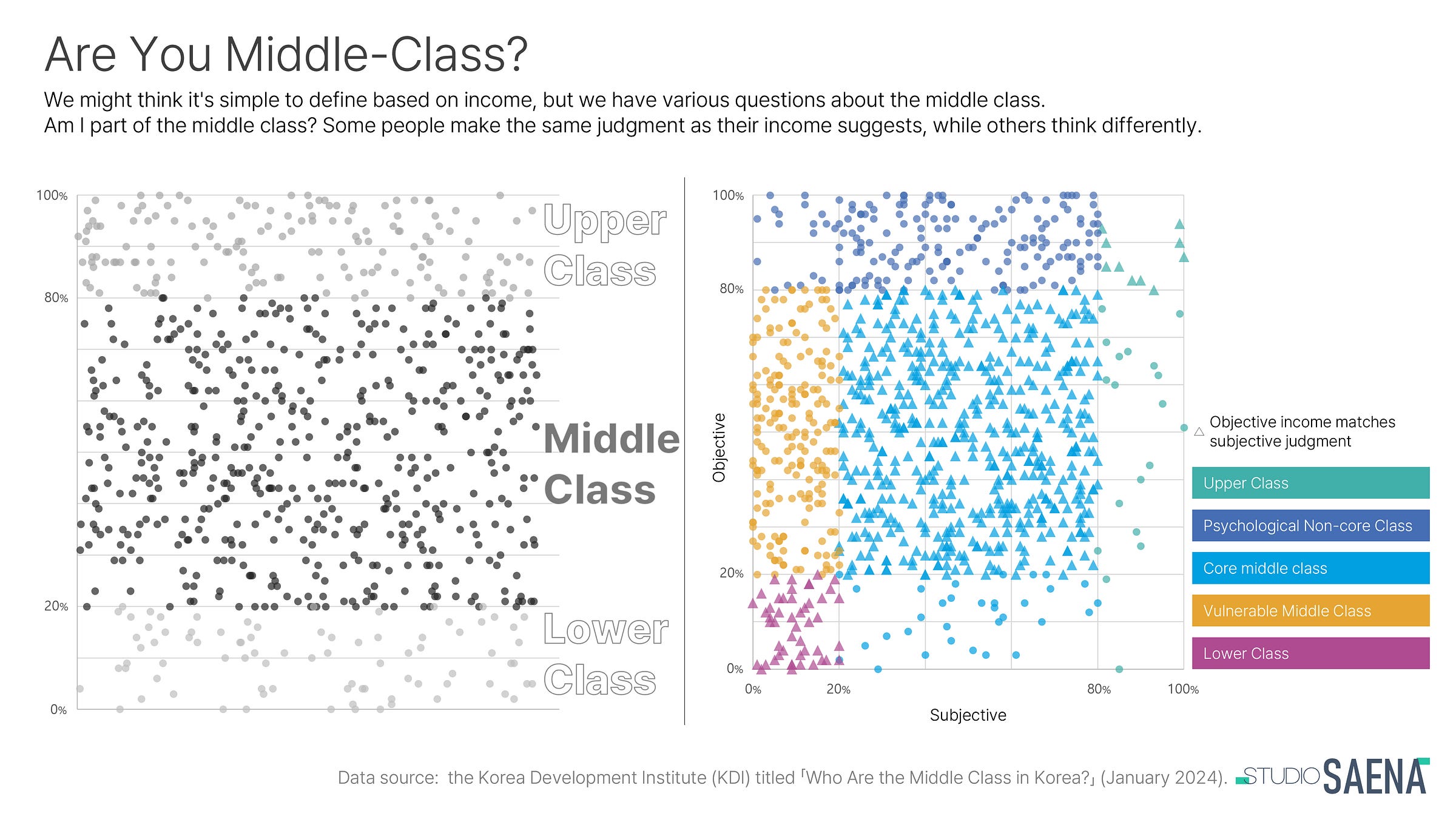Are You Middle-Class?
Exploring the Gap Between Objective Income and Subjective Perception: What It Means to Be Middle Class in Korea
It’s been said for a long time that life has become harder. Few people would argue that life has improved compared to the past.
In any country, ‘people who are living comfortably’ are often referred to as the middle class. Yet, many Koreans say, ‘I am not middle class,’ implying, "I earn less and have less wealth than the middle class." Despite having relatively high income levels compared to other countries, many people feel that life is difficult and dream of escaping this negative situation.
After pondering these subjective thoughts and sharp reactions, I came across a report by the Korea Development Institute (KDI) titled 「Who Are the Middle Class in Korea?」 (January 2024).
I took the percentage of survey participants in the report, converted it to a group of 1,000 individuals, and plotted them on the graph.
If we only consider the middle class based on objective income, the graph on the left is what we get.
The points placed in the 20-80% range (note: the points within the same range do not have differences; I added random values to scatter them) represent those who are considered middle class in terms of income.
But the report adds another evaluation criterion.
It’s a [subjective] judgment. When we consider whether people subjectively perceive themselves as middle class, separate from their objective income, the 1,000 points on the graph become more colorful. The graph on the right shows these results.
The points on the graph are colored according to their income range, with the largest area in the center representing those who are both objectively and subjectively middle class, known as the [core middle class].
Triangles indicate points where objective income and subjective judgment match, while circles represent discrepancies between the two.
There are many possible interpretations of this graph, but one point to highlight is that the number of yellow circles representing people who subjectively view themselves as lower class (0-20%) is much higher than those who view themselves as upper class (above 80%). The high density of yellow circles in the 20-80% income range suggests that many people might be underestimating their income and abilities.
(Continued in the next post)


